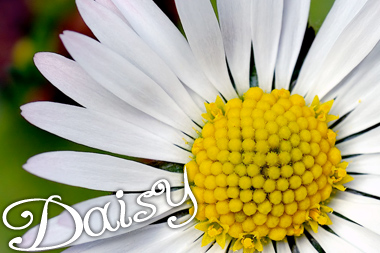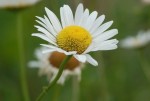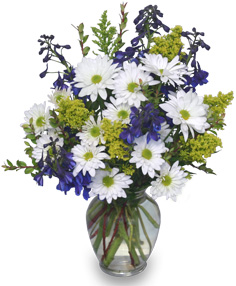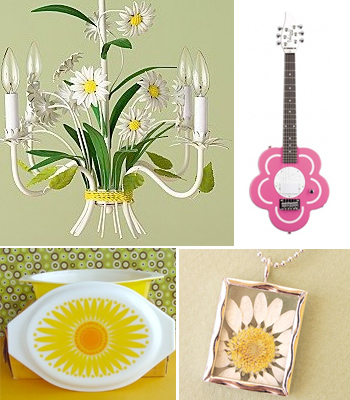
“He loves me, he loves me not … he loves me!”
For most of us, the daisy brings back a host of childhood memories filled with outdoor play and sunshine! Hours of fun making daisy chains and determining whether “He loves me,” or not. Recent popularity of the Gerber daisy has brought daisies into the spotlight once again. However, the classic white and yellow daisy and the Gerber daisy are actually two separate plants all together! In fact, the most commonly called “daisy” flowers are 3 separate genus’.
Daisy
Scientific name: Asteraceae
Use: Flower
Type: Herbacious Perennials
DESIGNING
Stem: 8-32″
Blossom Size: 2-5″
Texture: Satin
Colors: Variety
Bloom Season: Late spring, early summer
Flowers Available: Year Round
ALL ABOUT THE DAISY
- Contrary to popular belief, there is really no true ‘daisy’. Many people refer to almost any member of the Asteraceae family (formerly Composite family) with distinct ray and disk flower heads as ‘daisy’. A truer description of daisies is ‘daisy-like’.
- We’ve all heard the phrase, “dead, buried, and pushing up daisies” but where did that come from? The phrase was first recorded in 1918 in a poem called A Terre, about World War I by Wilfred Own.
- Saint Louis was said to have a ring with three engraved symbols on it: a daisy for his wife, a cross for his country, and a Fleur De Lis for his religion — all he held dear.
- The name daisy is thought to have derived from the slang “day’s eye.”

TYPES OF ‘DAISIES’
The common daisy we all know and love is a Bellis perennis. This little beauty has been found in paintings, furnishing, and jewelry dating back to the ancient Egyptians. It has been inspiration for artists, poets, songwriters and other such artists:
The Daisy follows soft the Sun —
And when his golden walk is done —
Sits shyly at his feet —
He — waking — finds the flower there —
Wherefore — Marauder — art thou here?
Because, Sir, love is sweet!
-From Emily Dickinson’s The Daisy follows soft the Sun
This simple flower is used to symbolize innocence and purity, as well as new beginnings. The unique smell is the reason it was taken out of the Genus Chrysanthemum and moved to the Genus Leucanthemum.
Chrysanthemums are the second commonly used ‘daisy’. Often called daisy poms, these little guys tend to have a more greenish colored center. This is the type (other than Gerbs) most commonly used in floral arrangements.
The Gerbera, or Gerber Daisy is the fifth most used cut flower in the world. Their flower heads are huge, and their slender stem makes them gorgeous in arrangements. If you’re girlfriend says “Daisies are my favorite flowers,” she is probably referring to these beauties.
EXTREME DAISIES
If you’ve never made a daisy chain, you’re missing out! My cousin and I used to make bracelets, necklaces, crowns — everything when we were little girls. You simply can’t play fairies without one!
How to make a daisy chain:
It’s super easy. Take care to pick daisies with about 2½-3″ stems. At the very end of the stem use your fingernail or some other flat, sturdy tool to cut a slit the daisy’s stem. Take another daisy and insert into the slit you just made. Cut a slit into that daisy and repeat. To finish, cut a large slit and stuff the flower head into it. These can be as long or short as you want. Be creative and attempt new styles … Can you make a double daisy chain?
Daisies have almost come to represent girlishness in general. I am in love with some of the daisy items I’ve found researching this post:


 Find Your
Find Your 


Speak Your Mind